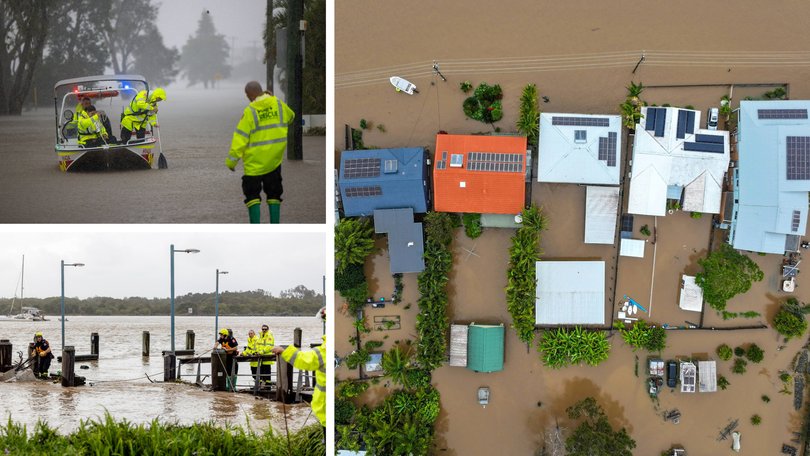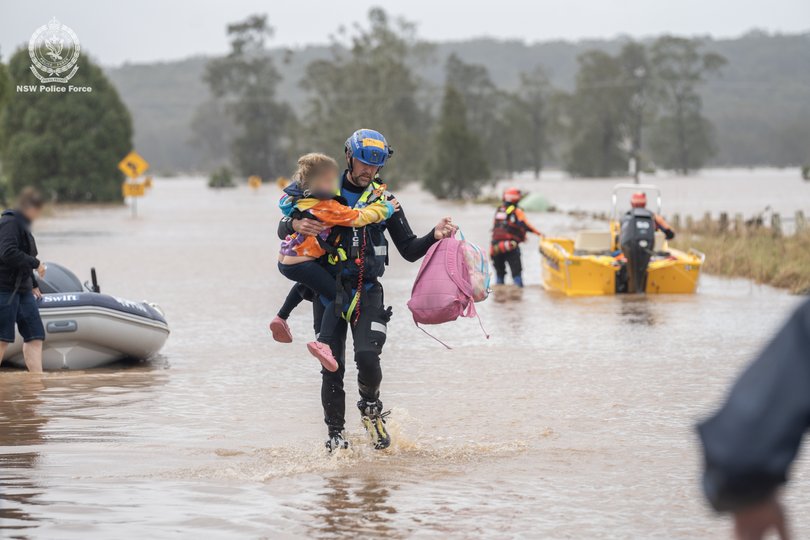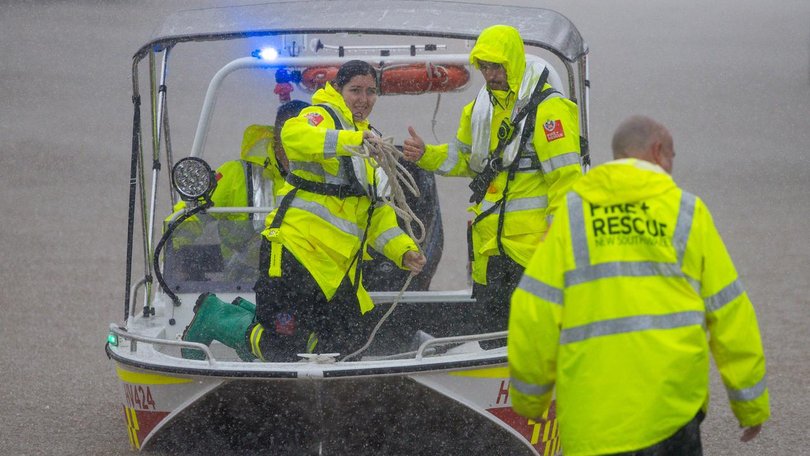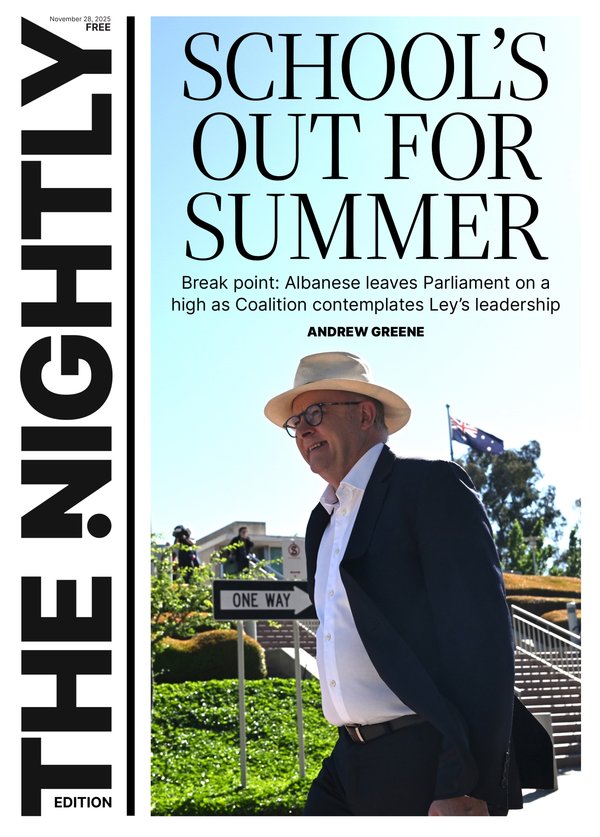NSW flood crisis: Missing person, Cole Perry, feared swept away as death toll climbs

At least four people are dead and more than 50,000 remain stranded as the flood emergency across northern New South Wales continues, with entire communities cut off, thousands of homes without power, and emergency crews working around the clock.
In a heartfelt address on Friday, Prime Minister Anthony Albanese, who cut a break short to visit the region, spoke directly to flood affected residents saying “you are not alone”.
“The Federal Government, the State Government, local Government, as well as the whole of the people of NSW and indeed, the people of Australia, are with you at this time,” he said.
Sign up to The Nightly's newsletters.
Get the first look at the digital newspaper, curated daily stories and breaking headlines delivered to your inbox.
By continuing you agree to our Terms and Privacy Policy.The Prime Minister was scheduled to visit Taree, one of the worst-hit areas, with NSW Premier Chris Minns. But the pair were forced to abort the trip and return to Maitland on Friday morning due to worsening weather conditions.
In the State’s Mid North Coast region, communities are still reeling from some of the worst flood impacts in living memory.
Towns including Taree, Port Macquarie, Wauchope, Kempsey, and Coffs Harbour have all endured severe flash flooding, mass evacuations, and extended periods of isolation.
More than 50,000 people remain stranded and an estimated 9000 homes and businesses are still without power.
SES crews continue to report access issues in remote locations, where residents are completely cut off and relying on emergency air drops for essential supplies.

Mr Minns said there had already been 678 flood rescues since the disaster began - 177 of which had occurred in the 24 hours to 12pm on Friday.
He praised the “heroic” volunteers and emergency services workers, saying without them “we would have had hundreds of deaths”.
Mr Albanese called on residents to heed warnings.
“People who are just giving up their own time, risking their own safety, in order to help others, and that provides a need to really emphasise that people need to follow the warnings which are placed in the various sites,” he said.
“Please listen to that advice and follow it because, tragically, we have seen four people lose their lives, three of which are associated with driving through floodwaters.
“If it’s flooded, forget it. We keep saying it.”

Among the four confirmed victims is David Knowles, 63, who refused rescue at his Moto property in order to stay behind with his cattle and help his family reach safety. Tragically, he was later found dead on the verandah.
A 34-year-old man was found in floodwaters near Rosewood after his car was swept away, and a woman in her 60s died near Brooklana after attempting to drive through floodwaters between Dorrigo and Coffs Harbour.
On Friday morning, a man in his 70s was found inside a submerged car at Nana Glen, about 30km northwest of Coffs Harbour.
A 49-year-old declared missing earlier on Friday after walking near a flooded roadway at Nymboida, about 40km south of Grafton, has been found.
Police said he was reported to be in “good spirits”.
Emergency service crews on Friday also intensified their efforts to find motorcyclist Cole Perry.
The 31-year-old from Newcastle was reportedly last seen on Thursday at the Nambucca Service Station, south of Coffs Harbour, while travelling from Coffs Harbour back to Newcastle.
His aunt Rose Andrews said his family was worried he may have fallen victim to the extreme weather conditions, as he has yet to return home. “He is very loved and his mum and family are worried sick,” Ms Andrews said.
The family reported his disappearance to the police on Friday morning, however, Mr Perry has not yet been officially declared missing.
Opposition Leader Sussan Ley was briefed on the crisis by emergency management authorities in Canberra on Friday, and also praised the efforts of frontline responders and critical public servants.
“The professionalism and dedication of our emergency services personnel, as well as thousands of volunteers, is embodied in their rescue of Australians from roofs and in the steady thrum of dinghies giving safe passage to the vulnerable.”
NSW SES chief superintendent of state operations, Dallas Burnes, urged the public to remain patient as emergency services check that evacuation zones are safe to return to.
”We’ve still got some significant river heights in the Manning and in all the systems up there that have been at warning levels,” he said.
”We are de-escalating some of the evacuation warnings once we’re able to check out areas and make sure they’re safe. We do ask the public they be patient for that. It’s not just that it’s blue skies now”.
Further south, the Hunter region remains under threat, with parts of Taree, Gloucester, and surrounding river systems continuing to overflow. Roads and bridges have been swallowed by rising water, and widespread power outages persist.
The Manning River has peaked in some locations, but floodwaters remain high, and conditions are expected to stay dangerous into the weekend.
In Greater Sydney and the Illawarra, the weather system has begun to shift, bringing intense rainfall to metropolitan areas overnight and into Friday.
Train lines across the network have been crippled, with Sydney’s T8 line halted near Bexley North due to track flooding, and delays reported on the North Shore line between Central and Town Hall. Rail corridors through the Central Coast and Hunter regions have also been heavily disrupted.
The South Coast and Snowy Mountains are also bracing for impact, thanks to heavy rainfall throughout the day. The Bureau of Meteorology warned of six-hourly totals between 60 and 120mm, particularly around Nowra, Batemans Bay, Moruya, Bega, and Eden.
Rain was expected to ease from the north as the day progressed, but catchments remain saturated and river systems are still at risk of renewed flooding.
Several flood warnings remain active, with more than 140 SES warnings across NSW. There is minor to major flooding occurring along the Hastings, Manning, and Orara rivers, and rising levels expected on the Shoalhaven and Bega rivers.
The Bureau of Meteorology also continues to warn of dangerous conditions, especially in saturated catchments across the South Coast and Tablelands, as the system tracks further south.
The State Emergency Service has now responded to 6,383 calls for help this week, including 1,887 in the past 24 hours alone, and carried out 728 flood rescues — 168 of those overnight.
In welcome news for those affected assistance is beginning to flow, with personal hardship grants of $180 per individual or $900 per family announced by the NSW and Commonwealth Governments. Emergency resupply operations are also underway in multiple isolated communities.
For the latest warnings and evacuation advice, visit the SES website or the Bureau of Meteorology.
